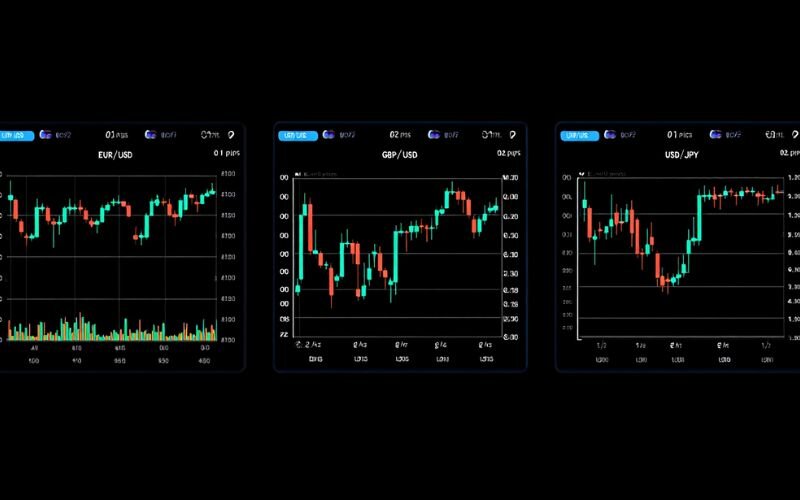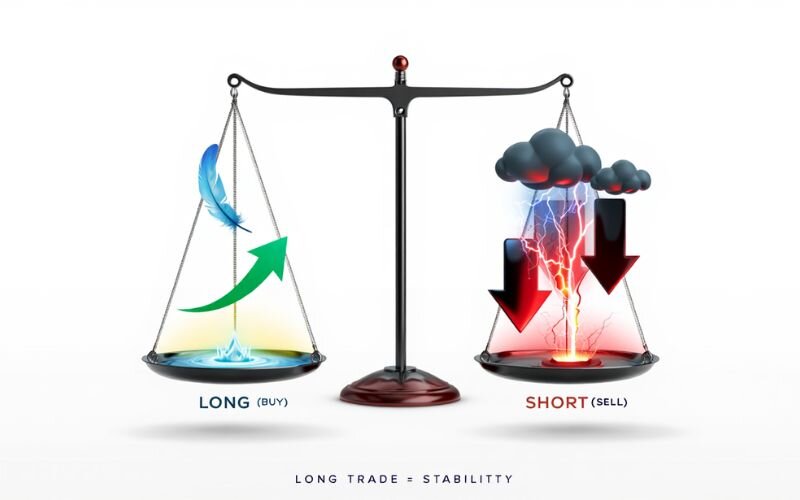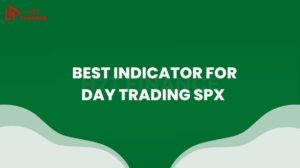Scalping in trading is a strategy that aims to profit from tiny, rapid price movements by executing numerous trades within very short timeframes. In this article, as a forex expert, I’ll walk you through what is scalping in trading, what is meant by scalping in trading, why it matters, how it works, and the essential tools and tips to help you apply this high-speed trading method confidently and effectively.
- What is scalping? Scalping is a high-frequency trading strategy focused on making small profits from minor price movements within short timeframes (a few seconds to a few minutes), typically used in highly liquid markets like forex.
- Main characteristics: Scalpers execute anywhere from 10 to hundreds of trades per day, requiring high speed, discipline, and accuracy, with each trade typically earning just a few pips.
- Technical requirements: A fast trading platform, real-time data, and an ECN broker (such as IC Markets) are essential to minimize latency and slippage; substantial capital or high trading volume is necessary to generate meaningful profits.
- Pros and cons: Scalping offers frequent profit opportunities and avoids overnight risk, but demands constant focus, incurs high trading costs, and is generally not suitable for beginners.
- Popular strategies: These include breakout trading, momentum trading, mean reversion, and news-based trading—mainly applied to major currency pairs like EUR/USD and GBP/USD.
- Role of technology: AI and algorithmic trading help automate and optimize scalping, enhancing accuracy and reducing emotion-driven errors.
- Risk management: Tight stop-losses, a balanced risk-to-reward ratio, and avoiding overtrading are crucial for success.
- Tips for beginners: Start with a demo account, focus on highly liquid currency pairs, learn to use keyboard shortcuts, and maintain strict discipline to avoid common mistakes like revenge trading or neglecting transaction costs.
1. The background of scalping trading
Scalping, or short-term trading, originated in the early days of stock exchanges, where traders capitalized on small price movements to generate profits. With the advancement of technology particularly from the late 1990s to the early 2000s scalping became increasingly popular thanks to online trading platforms and real-time market data.
The rise of high-frequency trading (HFT) and sophisticated technical analysis tools has made scalping no longer an exclusive strategy of financial institutions, but a viable option for individual traders as well. In the context of the Forex market, with its high liquidity and 24/7 activity, scalping has flourished, enabling traders to exploit small price fluctuations within short timeframes with speed and precision.
2. What is scalping in trading? A full explanation of the term for beginners
Scalping in trading is a strategy focused on capturing small profits from minor price changes by executing a large number of trades over extremely short timeframes.
Traders who use this approach, known as scalpers, rely on speed, discipline, and precision to benefit from frequent price fluctuations. If you're wondering what is a scalper in trading, it refers to a trader who aims to make many small profits through quick trades over very short timeframes.
Scalpers often believe that small price moves are more frequent and easier to exploit than larger ones.
For example, a scalper might look for a 1–2 pip movement in EUR/USD within just 30 seconds, and repeat this process multiple times throughout the day. Over time, these small wins can compound into substantial profits, as long as they avoid large losses.
Scalping trading explained for beginners:
By nature, scalping is a high-frequency trading technique. A scalper may execute anywhere from 10 to several hundred trades per day, with each trade aiming for a small profit.
So, what exactly is scalping in trading? The term "scalp" refers to each quick trade executed to capture a small price movement. Because scalping involves a large number of trades within a short period, with very modest profit expectations per trade, it can be unprofitable without sufficient capital or high trading volumes.
The pressure of processing dozens or even hundreds of orders per day also makes many brokers especially market makers wary or restrictive of this trading style, as the high trading volume can strain their systems.
However, ECN brokers like IC Markets support and welcome scalping, thanks to their high-speed, direct order-matching systems, which help minimize latency and slippage. Therefore, traders must choose a reliable trading platform with low latency and fast execution before starting to scalp, as this is a key factor determining the success of the strategy.
These micro-trades are typically executed on ultra-short timeframes like 1-minute or 5-minute charts.
This strategy demands:
- Quick decision-making.
- Constant market monitoring.
- Strong risk management.
- A reliable exit strategy.
When exploring what is scalping in trading, one quickly realizes that the key is to prevent significant losses, since even one large drawdown can wipe out dozens of successful trades. A robust risk management system is non-negotiable.
Who is suitable for scalping? Scalping isn’t ideal for everyone. It requires discipline, emotional control, and the stamina to analyze charts and execute trades under pressure. Those working 9-to-5 jobs or lacking experience with market volatility might find scalping impractical.
3. What is scalping in day trading?
Scalping in day trading is a specific subset of intraday strategies where traders open and close positions within minutes or even seconds to capture very small price movements. While day traders typically hold trades for hours and aim for larger price swings, scalpers work on much shorter timeframes and prioritize speed and volume over magnitude.
The main difference lies in the frequency and duration of trades:
- Day traders might execute 3-10 trades per day, each lasting 15 minutes to a few hours.
- Scalpers might perform 50-200 trades per day, each lasting less than 5 minutes.
In day trading, scalping is especially effective when markets are volatile and highly liquid, such as during market opens or after major news releases. Successful day scalpers often rely on:
- Fast execution platforms and low-latency brokers.
- One-minute charts, tick charts, or even Level II market data.
- Strict discipline to avoid overtrading or emotional decisions.
Scalping in day trading isn’t about catching big moves, it's about consistency, volume, and discipline. For traders looking to stay fully engaged with the market throughout the session, scalping can be a high-intensity but rewarding approach.
4. How does scalping work in forex trading?
Scalping thrives in liquid markets like forex, where spreads are tight and execution is fast. The approach involves opening and closing multiple trades rapidly to exploit small price shifts.
Let’s walk through a simple forex scalping trade using EUR/USD:
- Buy 1 mini-lot (10,000 units) of EUR/USD at 1.1000.
- Price increases to 1.1002 within 1 minute.
- Sell at 1.1002.
- Profit = 2 pips × $1 per pip = $2 profit.
Now repeat this 50 times a day:
- 35 winning trades × $2 = $70.
- 15 losing trades × $1 = -$15.
- Net Daily Profit = $55.
The potential grows quickly when done at higher volumes or with multiple pairs. However, the strategy demands accuracy and a razor-sharp exit plan.
Read more:
- Forex Market Structure: Patterns, Tools & How to Read It
- What does NFP stand for? Definition and why it matters in finance – Expert’s insight
Key points of scalping:
- Quick Profits from Small Moves: Scalping focuses on repetitive small wins.
- Strict Exit Strategy: Prevents large losses from negating cumulative gains.
- Essential Tools: Real-time data, fast trading platforms, and stamina are must-haves.

Without these elements, scalping becomes a high-risk gamble rather than a systematic strategy.
5. What is scalping in trading's case study?
To truly understand the power and potential of scalping, it's useful to look at a real-world example in the forex market. The following case study highlights how a forex trader can apply scalping techniques to generate profits from even the smallest price fluctuations.
A forex scalper focuses on the EUR/USD currency pair, trading on the 1-minute chart during the London session, where liquidity is high. The trader uses a strategy based on minor breakouts and quick momentum bursts.
- Entry: Buys EUR/USD at 1.0840 with a 2-pip target and a 1-pip stop-loss.
- Exit: Price reaches 1.0842 within 45 seconds.
- Profit: 2 pips (with $10 per pip on a mini-lot, that’s $20 profit).
This trade is repeated 50 times a day with a 70% win rate:
- Win trades: 35 trades × $20 = $700.
- Loss trades: 15 trades × $10 = -$150.
- Net Profit: $550 for the day.
This immediately shows the importance of discipline. One undisciplined loss can significantly affect the day’s earnings.
6. Considering scalping in trading for investors: Pros and Cons
Before deciding whether what is scalping in trading fits your trading style and risk appetite, it's essential to understand its advantages and drawbacks clearly. Below is a table summarizing the key pros and cons of scalping:
| Pros of scalping | Cons of scalping |
|---|---|
| Lower risk exposure – Less time in the market minimizes risk. | Requires great effort – Demands high concentration and discipline. |
| Potential for higher profits – Small, frequent wins add up. | High spread fees – Many trades lead to significant transaction costs. |
| Higher win rate – Targets small profits, so win rates are generally higher. | Time-consuming – Needs constant screen time and quick reactions. |
| Allows multiple trades – More opportunities to capitalize on market volatility. | High drawdown potential – Bigger lot sizes amplify losses in a losing streak. |
| No rollover or swap fees – No overnight positions, so no extra charges. | Not ideal for beginners – Demands market fluency and fast execution skills. |
7. What is scalping in trading's popular strategies and techniques?
If you've ever wondered what is scalping in trading, you're stepping into one of the fastest-paced corners of the financial markets. Unlike longer-term trading styles, scalpers thrive on the quick turnover of trades, often holding positions for just seconds or minutes.
Having spent years observing market dynamics and trading alongside expert scalpers, I’ve seen firsthand how this method demands precision, speed, and a keen understanding of market microstructure. Scalping is a collection of strategies, each designed to seize brief opportunities before the market shifts again.
7.1. Forex scalping strategies
In forex trading, understanding what is scalping in trading helps explain why it is especially popular, as the market runs 24 hours, providing constant liquidity and opportunity. The best forex scalping strategies zero in on major currency pairs like EUR/USD, GBP/USD, and USD/JPY.
Let’s break down the most common scalping styles and their approaches. Here’s a table summarizing the key scalping strategies widely used in forex:
| Scalping Strategy | Description | Example in Forex |
|---|---|---|
| Market Making | Placing simultaneous buy and sell orders to profit from the spread between bid and ask prices. | Placing buy at 1.1200 and sell at 1.1202 on EUR/USD |
| Breakout Scalping | Entering trades immediately after price breaks a key support or resistance level, confirmed by volume spikes. | Buying GBP/USD after it breaks above a strong resistance level |
| Momentum Scalping | Trading in the direction of strong price moves identified by momentum indicators like RSI or MACD. | Selling USD/JPY during a rapid downward momentum triggered by news |
| Mean Reversion Scalping | Taking trades expecting price to revert to its average after being overbought or oversold, often using Bollinger Bands or RSI. | Buying EUR/USD after a sharp drop indicated by oversold RSI |
| News-Based Scalping | Profiting from volatility spikes immediately after economic announcements or earnings reports. | Scalping USD pairs after nonfarm payroll data release |
| Market Depth Scalping | Using Level II market data to identify where large orders are queued and trading in that direction. | Monitoring order book to scalp around large buy walls in EUR/USD |

These strategies hinge on lightning-fast executions, often routed through advanced trading platforms with Level 2 order book views and time-of-sales data. In forex scalping, pre-programmed hotkeys or one-click order entries provide the quickest route to capitalize on small price fluctuations.
However, while scalping promises high reward through many small wins, it carries significant risk. For anyone wondering what is scalping in trading with example, it’s crucial to remember that discipline and strategy precision matter more than sheer speed.
7.2. The impact of AI and algorithmic tools on scalping
Scalping has evolved significantly in recent years, largely due to advances in algorithmic trading and artificial intelligence (AI). What was once a manual hustle of split-second decisions now often involves machines that can scan thousands of price ticks per second, identifying fleeting arbitrage opportunities invisible to human traders.
Algorithmic trading bots have become invaluable for scalpers, automating rapid entries and exits. These bots continuously monitor market depth, liquidity, and volatility, executing trades instantly to capture micro profits. The biggest advantage here is the reduction of human errors caused by hesitation or emotion.
To fully grasp what is scalping in trading in the modern era, it’s important to look beyond speed, AI and machine learning models now add a predictive layer to scalping strategies.
By analyzing vast historical and real-time data, AI systems can forecast short-term price movements and adjust scalping algorithms accordingly. For instance, some AI tools detect shifts in volatility or liquidity that signal an ideal scalping moment, allowing traders to enter with higher confidence.
7.3. Scalping strategies tailored to regional markets
Scalping success also depends on regional market characteristics. Different markets exhibit unique liquidity patterns and volatility, influencing which scalping methods work best.
- Asian Markets: Tokyo and Hong Kong sessions offer concentrated liquidity early in the trading day. Scalpers here exploit predictable price “gaps” at market open, focusing on currency pairs or stocks native to the region.
- European Markets: The London open is famous for sharp volatility bursts. Scalpers often target major forex pairs like EUR/USD and GBP/USD during this session’s narrow window of opportunity.
- Emerging Markets: While less liquid, emerging markets can provide micro-trends ideal for scalpers willing to accept higher risk. Understanding local market structure and exercising caution is key.
Having traded across these regions, I recommend adapting your scalping strategy to the specific market’s microstructure, ensuring you account for liquidity, spreads, and volatility dynamics.
8. What is scalping in trading’s essential tools?
To master scalping, you need the right tools at your fingertips.
- Real-time market data: Scalpers rely on up-to-the-second data feeds to catch fleeting price moves.
- Low-latency brokers: Direct-access brokers offering ultra-fast execution minimize slippage and missed opportunities.
- Robust trading platforms: Platforms with hotkeys, customizable layouts, tick charts, and one-minute charts enable swift decisions.
- Risk management features: Integrated stop-loss orders and position-sizing tools help protect capital amid rapid trading.
- Automation tools: Algorithmic scanning and execution assist in managing dozens or hundreds of scalps daily.
In my early scalping days, lacking these tools meant many lost trades due to delayed order placement. Upgrading to professional-grade platforms with Level II data and hotkey functionality was a game changer.
Read more:
- Forex currency trading hours: What time does the forex market open?
- Floating currency exchange rate explained for Forex implications
- Formula for risk ratio: How to calculate and use it in real-world investing
9. Expert insights and research on scalping
To truly grasp what is scalping in trading, it helps to consider findings from leading financial institutions and expert analyses. Below is a summary of key insights from authoritative sources, highlighting how scalping fits into today’s market environment:
| Source | Key Focus | Main Findings | Practical Takeaway for Scalpers |
|---|---|---|---|
| BIS Triennial Central Bank Survey | Global forex and OTC market liquidity | - Major currency pairs have the deepest liquidity.
- Electronic and high-frequency trading dominate. - Consistent liquidity supports fast, frequent trades. |
Focus scalping efforts on liquid, major pairs like EUR/USD and USD/JPY to reduce slippage and costs. |
| CFA Institute Research | Short-term trading strategies and market efficiency | - Scalping tightens bid-ask spreads and aids price discovery.
- Requires strong risk management. - Thin profit margins demand discipline. |
Develop a solid risk control plan with tight stop-losses and avoid emotional trading to succeed. |
| U.S. SEC Market Structure Reports | Impact of high-frequency trading on markets | - HFT improves liquidity but can fragment markets.
- Can cause sudden short-term volatility spikes. - Technology and regulation influence trading success. |
Stay informed on market structure and adapt quickly to volatility; invest in low-latency tech. |
This table captures the expert perspectives and research-backed foundations you need to understand scalping’s place in modern trading. Each source emphasizes different aspects from liquidity and technology to risk management helping scalpers refine their approach for better results.
10. Survival principles in scalping trading
If you’ve ever wondered, “What is scalping in trading, and how can I get started?”, here’s the answer for you.
From my years of experience coaching new traders, I’ve seen that mastering the basics of order execution and risk management is key to success. Below, I share practical tips that will set you on the right path:
- Master order execution: Choose a reliable broker known for fast, stable platforms. Learn hotkeys to place orders instantly, and practice on demo accounts to build speed without risk. Quick execution is crucial in scalping because price movements happen in seconds.
- Understand market trends: Always trade in the direction of the larger trend confirmed by indicators like moving averages or RSI. Avoid trading during volatile news events that can cause unpredictable price spikes, which are risky for scalpers.
- Start with long trades: Beginning with long (buy) trades is simpler and easier to manage emotionally than short (sell) trades. Once comfortable, add short trades gradually to your strategy for more flexibility.
- Manage risk stringently: Scalping requires tight stop-losses to protect your capital. Limit position sizes to small percentages of your account and avoid overtrading; chasing every minor move can lead to quick losses.
- Focus on liquid markets: Trade major currency pairs like EUR/USD or USD/JPY with high volume and tight spreads. These markets allow quick entries and exits with minimal slippage, crucial for scalpers.
- Stay disciplined: Set daily profit and loss targets and stick to them. Limit your trading hours to avoid fatigue, and never trade based on emotions. Discipline is the foundation of a consistent scalping strategy.
- Track progress: Maintain a detailed trading journal. Log each trade’s entry, exit, profit, and emotions. Review your data weekly to identify patterns and improve your scalping tactics.

Also, what is scalping in trading in forex requires awareness of transaction costs. Each trade involves spreads or commissions, which add up fast. Traders new to scalping often overlook this and find their profits wiped out. Opting for brokers with low spreads and commissions is non-negotiable.
Common mistakes to avoid when scalping:
Many novice traders jump into scalping without realizing the pitfalls. Avoiding these common errors will save you time, money, and frustration:
- Overtrading or revenge trading: Chasing losses or making too many trades in a day exhausts your capital and focus. Set strict daily limits and stick to your plan, even after losses.
- Trading illiquid currency pairs: Pairs with low volume often have wide spreads, increasing costs and slippage. Stick to highly liquid pairs like EUR/USD for smoother scalping.
- Ignoring transaction costs: Frequent trades mean costs can eat into profits quickly. Always factor commissions and spreads into your strategy and seek low-cost brokers.
- Not using stop-losses: Without stop-losses, a single bad trade can wipe out many small gains. Use tight, well-placed stops to protect your account every trade.
- Poor risk-reward setups: Scalpers must ensure their winning trades outweigh losses. Aim for a risk-reward ratio of at least 1:1 and avoid trades with unfavorable odds.
11. Overview: Scalping vs. Other trading styles for investor consideration
Choosing the right trading style is crucial for your success and comfort as an investor. Understanding what is scalping in trading can help you see that scalping is not the only approach; day trading and swing trading each have distinct characteristics. Below is a comparison of scalping vs. day trading to help you understand how scalping fits within the broader trading spectrum.
| Feature | Scalping | Day Trading |
|---|---|---|
| Time Frame | Very short, trades last 1 to 2 minutes. | Longer, trades last 1 to 2 hours, closed before market close. |
| Account Size & Risk | Usually requires a larger account and takes higher risks per trade due to high frequency. | Moderate account size, with trades sized for balance between risk and reward. |
| Market Experience | Scalpers rely on fast decisions and deep market knowledge to predict short-term price moves instantly. | Day traders use analysis to plan trades and hold for longer periods within the day. |
| Result Timing | Immediate results: profits or losses realized within minutes. | Results come by end of the trading day. |
| Trading Frequency | Very high: dozens or hundreds of trades per day. | Moderate: several trades per day, less intense than scalping. |
This table highlights why scalping suits traders who thrive in fast-paced environments and have the discipline to execute rapid trades without hesitation. On the other hand, day trading offers a slightly more relaxed pace, suitable for those preferring to spend more time analyzing trades.
12. FAQs: Common questions when searching for what is scalping in trading
12.1. can scalping trading be profitable?
Scalping can generate profits when practiced with consistency and discipline. However, it demands quick decision-making and effective risk controls to minimize potential losses.
12.2. Is scalping suitable for new traders?
Scalping is generally challenging for beginners because it requires rapid choices and emotional stability in fast-moving markets.
12.3. How does the 1-minute scalping strategy work?
This method involves executing multiple trades within one-minute timeframes, aiming to repeatedly capitalize on small, rapid price fluctuations.
12.4. Is scalping trading legal?
Yes, scalping is fully legal and regulated. It is a high-frequency approach that calls for skill and discipline but complies with all trading regulations.
12.5 Why might brokers be unfavorable toward scalping?
Brokers often dislike scalping because the high volume of quick trades can put strain on their systems and complicate risk management processes.
12.6. Is scalping trading profitable?
Yes, scalping can be profitable when executed with precision, proper tools, and strict risk management. Many traders generate consistent small gains that compound over time. However, profits can be quickly erased without discipline and a well-tested strategy.
12.7. Is scalping good for beginners?
Scalping is generally not recommended for beginners due to its fast-paced nature and high demands on decision-making and execution speed. New traders may find it overwhelming and prone to emotional trading errors. Starting with longer timeframes may provide a better learning curve.
13. Conclusion: Understanding what is scalping in trading to choose the right strategy for investors
By reaching the end of this guide, you now have a comprehensive understanding of what scalping in trading means and how it differs from other trading strategies. You’ve learned practical, expert-backed tips on how to start scalping safely and effectively, common mistakes to avoid, and how scalping compares to day trading.
Scalping can be a powerful tool in your forex trading arsenal, especially when executed with discipline, efficient order handling, and risk management. It’s not for everyone, but if you enjoy fast-paced trading and have the patience to practice and refine your approach, scalping can offer consistent, small profits that add up over time.
To take your forex journey further, I encourage you to explore more educational content on the Swing Trading category at H2T Finance. There, you’ll find detailed tutorials, expert analyses, and real trader experiences to deepen your understanding beyond “what is scalping in trading” and boost your trading confidence.



